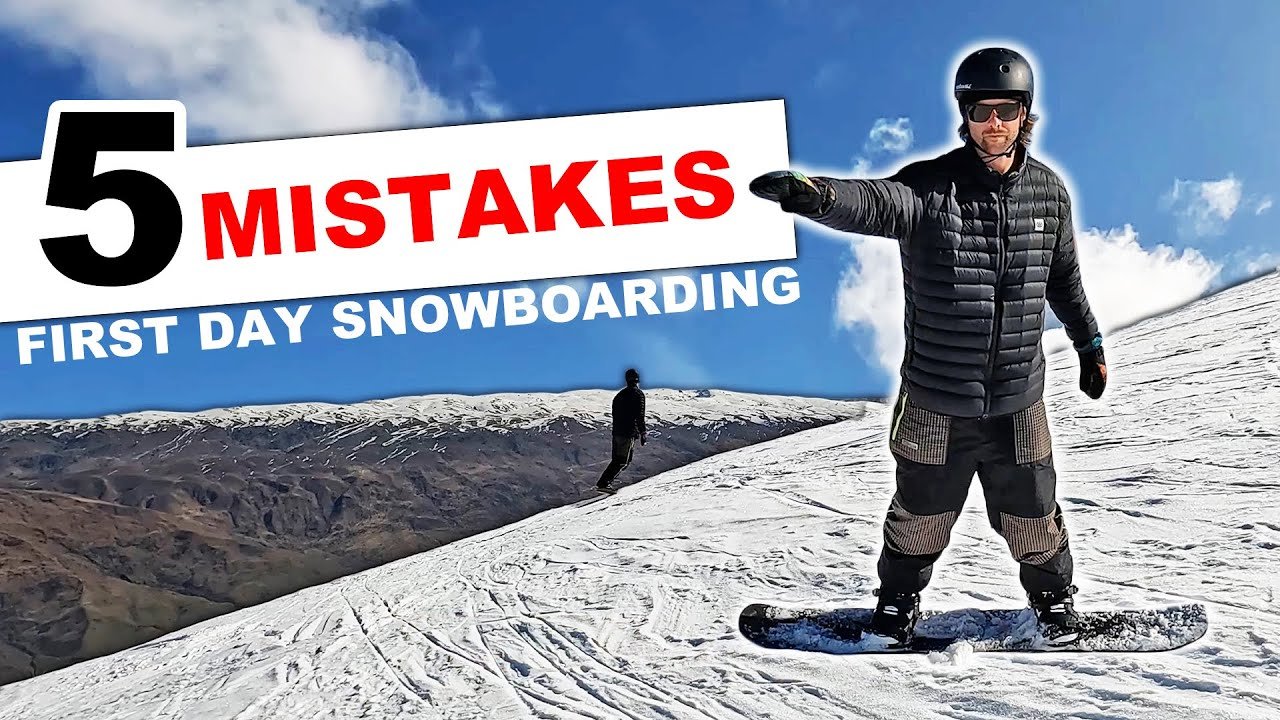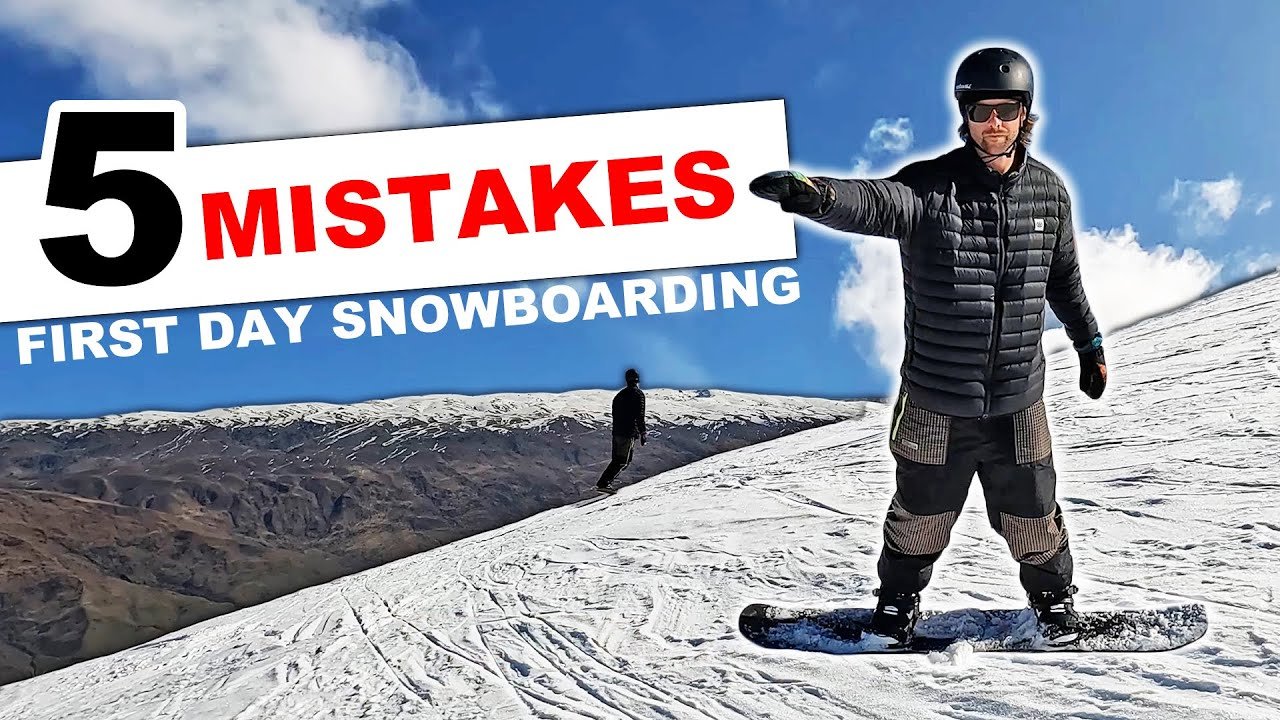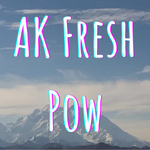
5 Mistakes Beginner Snowboarders Need To Avoid
In the video “5 Mistakes Beginner Snowboarders Need to Avoid” by SnowboardProCamp, Kevin from Cardrona New Zealand shares valuable advice to help new snowboarders steer clear of common errors on their first day. The first mistake to avoid is not properly setting up your snowboard. Kevin suggests setting up your snowboard at home in a twin stance and ensuring that the bindings are positioned correctly, the width of the snowboard is slightly wider than your shoulder width, and your boots fit properly into the bindings. The second mistake is not wearing the right outerwear for the weather. Kevin advises checking the weather ahead of time, dressing appropriately, and bringing extra layers to adjust as needed throughout the day. He also recommends having spare mitts or socks in case something gets wet. Lastly, he highlights the importance of wearing the proper safety gear, such as a helmet, wrist guards, and crash shorts, to protect yourself from potential falls and injuries. Kevin emphasizes taking your time to learn each step properly and not rushing to progress too quickly, as enjoying the process and having fun is what snowboarding is all about.
Mistake 1: Improper Snowboard Setup
When it comes to snowboarding, setting up your snowboard properly is essential to ensure a smooth and enjoyable ride. One common mistake that beginners make is not checking the direction of the bindings. It’s important to make sure that the bindings are facing the correct way for your riding stance, whether it’s regular or goofy. This can be determined by figuring out which foot feels more comfortable as the front foot.
Another aspect of setting up the snowboard is adjusting the width. It’s best to set the width of the snowboard slightly wider than your shoulder width. This allows for more comfortable and controlled turns. Adjusting the width is typically done by moving the bindings closer to the edges of the board.
Lastly, it’s crucial to ensure that your boots fit properly into the bindings. This can be done by checking if the boots securely fasten into the bindings and if there is enough room for your feet to move comfortably. Making any necessary adjustments with the straps can help ensure a proper fit. Taking the time to set up your snowboard correctly will greatly contribute to a successful day on the slopes.
Mistake 2: Inadequate Outerwear
Wearing the right outerwear is vital for staying comfortable and protected while snowboarding. One mistake that beginners often make is not wearing enough layers. It’s important to keep in mind that the temperature on the mountain can be significantly colder than at the base, especially with the wind chill factor. Dressing in multiple layers allows you to adjust your clothing according to the changing conditions and your level of activity.
On the other hand, wearing too many layers can lead to overheating and discomfort. It’s essential to find the right balance and dress appropriately based on the weather forecast. Checking the weather ahead of time will help you determine how many layers to wear and what type of outerwear to choose.
Carrying extra layers in your bag is also a great idea. This way, if you start to feel too warm or too cold, you can easily add or remove a layer to maintain a comfortable body temperature. Additionally, having spare mitts or socks is beneficial in case anything gets wet during the day and needs to be changed.

Mistake 3: Lack of Safety Gear
Safety should always be a top priority when participating in any snow sport. One common mistake that beginner snowboarders make is not wearing a helmet. Wearing a helmet is crucial for protecting your head from potential injuries, especially in the event of a fall or collision. It’s important to invest in a helmet designed specifically for snowboarding or skiing, as they are designed to withstand impact and provide adequate protection.
In addition to wearing a helmet, consider wearing wrist guards. Wrist injuries are common among beginners as they tend to use their hands to break their falls. Wrist guards can help prevent fractures and sprains by providing extra support and protection to the wrists.
Another essential piece of safety gear is crash shorts, which are designed to protect the tailbone. Falls on the slopes can be inevitable, and protecting the tailbone can prevent severe bruising or even fractures. Crash shorts are recommended for beginners and even more experienced snowboarders.
For those who want to take extra precautions, elbow pads and knee pads are available for additional protection. While not as commonly worn as helmets or wrist guards, these protective gear items can provide added confidence on the slopes and minimize the risk of injuries.
Mistake 4: Choosing the Wrong Terrain
When starting out as a beginner snowboarder, it’s crucial to choose the right terrain to avoid overwhelming yourself and potentially putting yourself at risk. One mistake that beginners often make is going straight to advanced areas without proper skill or experience. It’s vital to understand your ability level and avoid terrain that exceeds your current capabilities.
Instead, look for beginner learning areas or bunny slopes where you can practice and progress at a safe and controlled pace. These areas are specifically designed for beginners, offering gradual slopes and a less intimidating environment. Taking the time to familiarize yourself with the slopes in the beginner area will allow you to build your skills and gain confidence before venturing onto more challenging terrain.
Before hitting the slopes, take a look at the trail map and familiarize yourself with the layout of the resort. This will help you locate the beginner snowboarding area and plan your day accordingly. By choosing the right terrain, you’ll set yourself up for success and ensure a more enjoyable experience.
Mistake 5: Rushing the Learning Process
Learning to snowboard is a process that requires time, patience, and practice. One common mistake beginners make is trying to progress too quickly. It’s important to understand that snowboarding is a sport that builds on each step of the learning process. Rushing through the steps can lead to frustration and hinder your ability to develop proper technique.
To avoid this mistake, it’s essential to understand the step-by-step learning process of snowboarding. Start with the basics, such as learning to balance, slide, and control your speed. Take the time to master each skill before moving on to the next. It’s normal for progress to vary among individuals, so don’t compare yourself to others or get discouraged if it takes longer for you to achieve certain milestones.
Enjoying the process is key to maintaining a positive attitude while learning to snowboard. Embrace the challenges and celebrate small victories along the way. Remember that snowboarding is meant to be fun, and taking the time to learn properly will ultimately lead to a more rewarding experience on the mountain.
Conclusion
By avoiding these five common mistakes, beginner snowboarders can ensure a safer and more enjoyable experience on their first day on the slopes. Setting up the snowboard correctly, wearing appropriate outerwear, using safety gear, choosing the right terrain, and taking the time to learn at a comfortable pace are all crucial aspects of a successful snowboarding journey. With the right preparations and a positive mindset, beginners can have a great time while developing their skills and falling in love with the exhilarating sport of snowboarding. So grab your snowboard, take it slow, and have a blast shredding the slopes!
